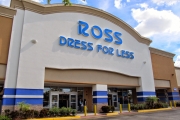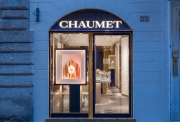Vacancies increased to 7.9% for Q2, a marginal increase over the reported 7.8% in Q1.
A recent report from real estate research firm Reis Inc. reveals that vacancy rates for US malls increased slightly in Q2, the first quarterly increase since Q4 2014. Additionally, higher-end malls continue to command premiums for space and are enjoying low vacancy rates, while the complete opposite applies to traditional malls.Additionally, both asking and effective rents experienced similar marginal declines. Asking rents dipped to 0.4% growth versus 0.5% in Q1, while effective rents rose by 0.5% versus Q1’s 0.6%. Completed space also seems to be lagging, with only 1.4 million square feet of new shopping center space delivering in Q2, the lowest level for a quarter in the past three years.
The report from Reis is further confirmation of the overall trend in the world of retail. High-end malls continue to thrive, while their traditional brethren are struggling to remain relevant. Besides the benefits of location and attracting more affluent consumers, high-end malls remain ahead of the curve in terms of being desirable destinations for today’s consumers. Older, run-down or even dilapidated malls will struggle to recover, unless there is a well-thought out renovation or redevelopment plan in the pipeline.
For retailers, the current environment continues to present a huge obstacle to continued success. There has been a wave of high-profile bankruptcies and store closings, and we may be nowhere near reaching the tip of the iceberg on those fronts.
"The heyday of department stores is clearly in the past while apparel retailers (for example) compete fiercely with e-commerce," Ryan Severino, senior economist for Reis, told Reuters in a recent interview.
A good part of the problem has to do with the rise in e-commerce. Amazon continues to make inroads in virtually every segment of retail, and that will not be slowing down anytime soon. Absent the overhead that comes with the territory for traditional brick-and-mortar, there is simply no way for traditional retailers to catch them in the price department. Where these retailers can match them ins in the area of service, by offering high-end customer service at its locations, as well as pick-up and delivery services that could rival some of the leading e-tailers.
Add it all up, and there will probably be a reduction in the total number of malls before things ‘level out.’ One analyst even has a specific ballpark in mind for what the ideal enclosed mall landscape would look like across the nation. Jan Kniffen, the CEO of J. Rogers Kniffen Worldwide Enterprises, recently shared to CNBC that of the current 1,100 enclosed malls, that number should actually be closer to 700. “The top 250’ll do fine, and the rest of them are going to struggle,” he said.
12 JULY 2016, USA

 Boohoo expands online presence with new marketplace for fashion
Boohoo expands online presence with new marketplace for fashion Victoria's Secret expands presence in Melbourne
Victoria's Secret expands presence in Melbourne Inditex's Bershka set to enter indian market with Mumbai store
Inditex's Bershka set to enter indian market with Mumbai store Ross stores expands across the U.S. with 24 new locations
Ross stores expands across the U.S. with 24 new locations Chaumet opens doors to debut boutique in Italy
Chaumet opens doors to debut boutique in Italy Birkenstock is launching first store in France
Birkenstock is launching first store in France Salomon elevates brand presence with new Paris flagships
Salomon elevates brand presence with new Paris flagships  Amiri expands presence in California
Amiri expands presence in California  Crocs expands its presence in India with Apparel Group
Crocs expands its presence in India with Apparel Group  Best Buy Canada to expand presence with 167 small-format locations
Best Buy Canada to expand presence with 167 small-format locations  Arket expands into Italy with Milan flagship
Arket expands into Italy with Milan flagship